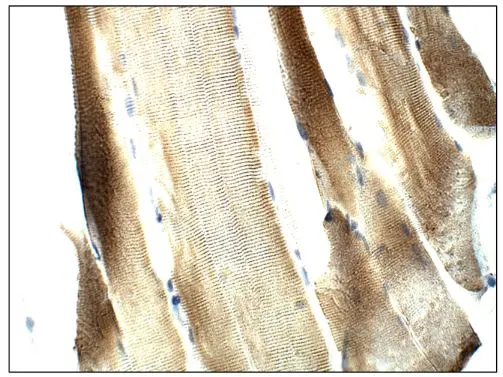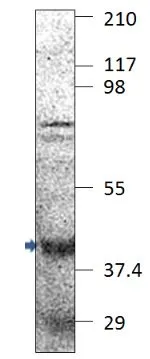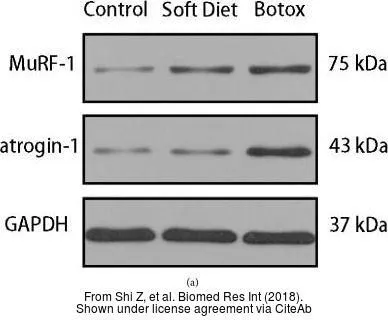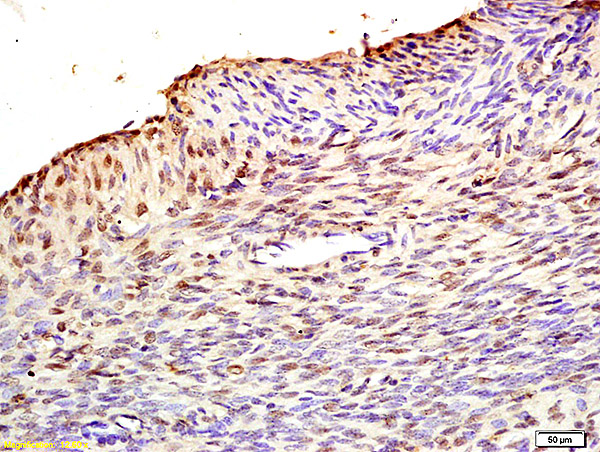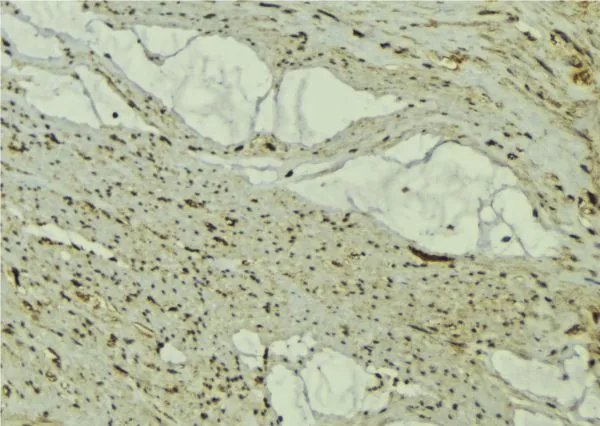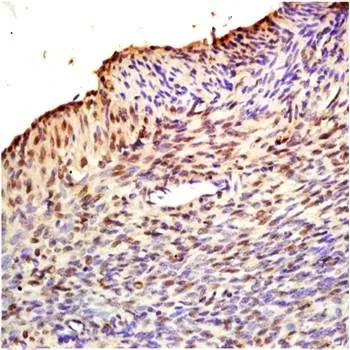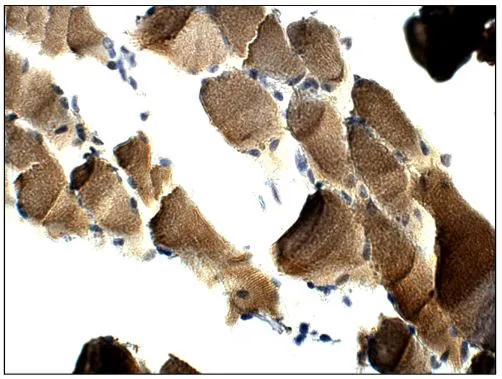
IHC-P analysis of mouse skeletal muscle tissue using GTX47819 FBXO32 antibody. Dilution : 1:50
FBXO32 antibody
GTX47819
ApplicationsImmunoPrecipitation, Western Blot, ELISA, ImmunoHistoChemistry, ImmunoHistoChemistry Paraffin
Product group Antibodies
TargetFBXO32
Overview
- SupplierGeneTex
- Product NameFBXO32 antibody
- Delivery Days Customer9
- Application Supplier NoteWB: 1:500. IP: 1:200. ELISA: 1:10000. IHC: 1:50-1:150. *Optimal dilutions/concentrations should be determined by the researcher.Not tested in other applications.
- ApplicationsImmunoPrecipitation, Western Blot, ELISA, ImmunoHistoChemistry, ImmunoHistoChemistry Paraffin
- CertificationResearch Use Only
- ClonalityPolyclonal
- Concentration0.64-0.72 mg/ml
- ConjugateUnconjugated
- Gene ID114907
- Target nameFBXO32
- Target descriptionF-box protein 32
- Target synonymsFbx32, MAFbx, F-box only protein 32, atrogin 1, muscle atrophy F-box protein
- HostRabbit
- IsotypeIgG
- Protein IDQ969P5
- Protein NameF-box only protein 32
- Scientific DescriptionThis gene encodes a member of the F-box protein family which is characterized by an approximately 40 amino acid motif, the F-box. The F-box proteins constitute one of the four subunits of the ubiquitin protein ligase complex called SCFs (SKP1-cullin-F-box), which function in phosphorylation-dependent ubiquitination. The F-box proteins are divided into 3 classes: Fbws containing WD-40 domains, Fbls containing leucine-rich repeats, and Fbxs containing either different protein-protein interaction modules or no recognizable motifs. The protein encoded by this gene belongs to the Fbxs class and contains an F-box domain. This protein is highly expressed during muscle atrophy, whereas mice deficient in this gene were found to be resistant to atrophy. This protein is thus a potential drug target for the treatment of muscle atrophy. Alternative splicing results in multiple transcript variants encoding different isoforms. [provided by RefSeq, Jun 2011]
- Storage Instruction-20°C or -80°C,2°C to 8°C
- UNSPSC12352203
References
- Shi Z, Lv J, Xiaoyu L, et al. Condylar Degradation from Decreased Occlusal Loading following Masticatory Muscle Atrophy. Biomed Res Int. 2018,2018:6947612. doi: 10.1155/2018/6947612Read this paper

